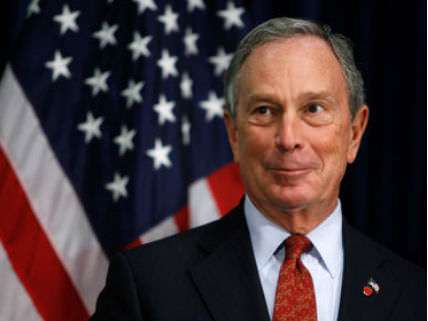Stops Are Down in New York, and So Are Homicides

Police counted 154 homicides in New York City during the first half of this year, down from 202 during the first half of last year. That decrease, The New York Times notes, coincided with a sharp decline in stop-and-frisk encounters: There were fewer than 100,000 in the first three months of this year, compared to 203,500 during the first three months of last year. On its face, the conjunction of a 24-percent drop in homicides with a 50-percent drop in street stops seems to count against the claim that the latter play an important role in preventing the former. But the NYPD has a couple of explanations, one of which lends support to the argument that the stop-and-frisk program, effective or not, is unconstitutional:
Police commanders point to what they say is the long half-life of the deterrent effect of stop-and-frisk, saying that criminals may decide to leave their guns at home because they have been stopped in the past, even if the odds of a stop have decreased in recent months. And the police say the decrease in violence has most likely led to a corresponding decrease in suspicious behavior, which results in fewer stops.
The second explanation—that when there are fewer homicides there is also less suspicious behavior of the sort that leads to stops—is superficially plausible but does not make much sense when you think about it. Even if suspicious behavior of all kinds were directly proportional to the murder rate, why would the decline in stops be more than twice as big as the decline in homicides? Furthermore, in the context of strong public criticism and federal litigation challenging the stop-and-frisk program, the recent sharp drop in stops looks like a deliberate effort to rein in use of the tactic, not a natural consequence of less crime. But at least this explanation is consistent with the idea that police stop someone only when they have "reasonable suspicion" that he is engaged in criminal activity.
Not so the first explanation. If the aim of these stops is deterring people from carrying guns, as opposed to finding weapons or stopping crimes in progress, they clearly are not based on the individualized suspicion that the Supreme Court has said is required by the Fourth Amendment. Rather, as New York Mayor Michael Bloomberg himself has suggested, the stop-and-frisk program is like a DUI checkpoint that randomly stops cars in an effort to deter drunk driving. Just as such DUI checkpoints rarely catch drunk drivers, the NYPD's street stops almost never discover weapons. According tio Bloomberg, that shows the stops are working. But randomly detaining and frisking young black and Latino men in an effort to discourage them from carrying guns is plainly inconsistent with Terry v. Ohio, the Supreme Court decision on which the constitutionality of the program depends. A frisk is always supposed to be based on a reasonable suspicion that the subject is armed, a crucial fiction that the mayor and the police department frequently forget.
Bloomberg apparently remembered the reasonable-suspicion requirement on Friday, when he argued that the targets of stops are overwhelmingly black and Latino because blacks and Latinos are more suspicious than whites, committing the vast majority of homicides (90 percent, according to the city's figures). That was, believe it or not, Bloomberg's attempt to rebut the charge that the NYPD engages in racial profiling. But Bloomberg's defense presupposes that police stop and frisk people based on "specific and articulable facts," which his DUI-checkpoint analogy implicitly concedes is not really true.


Show Comments (104)